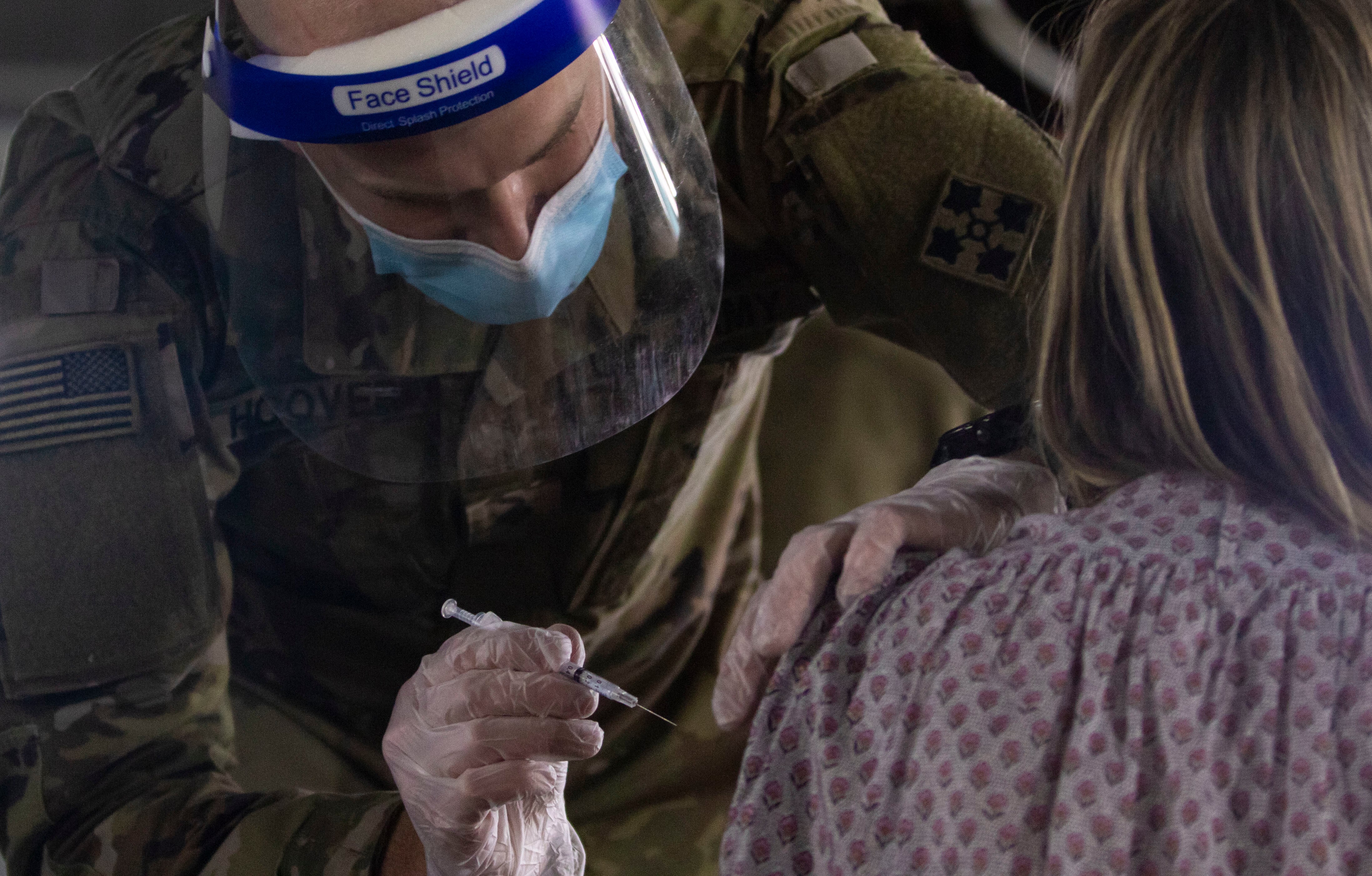Thousands of active-duty and National Guard troops called up to man COVID-19 mass vaccination sites earlier this year have headed and will continue to head home, as the number of sites has dwindled from 35 to eight, Pentagon spokesman John Kirby told reporters Tuesday.
Those teams, made up of active-duty medical personnel and Guard support, have administered more than 16 million doses since they first came online in February.
“So as of today, we are supporting eight vaccination sites, and expect to reduce that to five by the end of today,” Kirby said.
About 450 troops are deployed to Federal Emergency Management Agency sites in Ohio, New Jersey, Colorado, Oklahoma, Oregon, Minnesota and Kentucky are still deployed, he said, though the Ohio, Colorado and Louisiana locations were expected to cease operations on Tuesday.
Nationwide, according to the Centers for Disease Control and Prevention, just under 64 percent of adults are fully or partially vaccinated.
Vaccine demand peaked in April, according to data, when more than 4 million doses were administered in one day. Since then, demand has steadily dwindled, with fewer than 500,000 vaccinations given on June 5.
Defense Department support to FEMA has followed those trends. Thousands of troops were deployed in February and March to set up dozens of sites from California to New York, Texas to Florida.
The mass vaccination sites, some of which had both walk-up and drive-through options, were staffed by active-duty medics and nurses who volunteered to deploy from places by Joint Base San Antonio, Texas, and Fort Carson, Colorado.
RELATED

“I feel like I’ve seen all three sides of COVID,” Army 2nd Lt. Taylor Nehlig, a registered nurse at the Los Angeles site, told Military Times in February. “I’ve seen people at their most fearful, when they’re getting swabbed … and then, the past eight or nine months I’ve been actually working on a COVID floor, so I’ve seen people at their weakest. And now we come here and see people in their most joyful moments, of getting the vaccine and finally, a breath of relief.”
To support them, local National Guard troops helped with check-in and post-injection monitoring of patients.
“They told me I could be here until September, so we’ll see,” Senior Airman Samantha Campos, an unmanned aerial vehicle crew chief, told Military Times in February.
Though there will still be places to get vaccinated, it’s unlikely that troops will be manning FEMA sites beyond the summer.
“We’ll continue that mission as long as FEMA believes that they require our support,” Dr. Terry Adirim, acting assistant defense secretary for health affairs, told reporters on May 20, adding that the department was expecting another eight weeks of support, but prepared to extend another four weeks beyond that if necessary.
Meghann Myers is the Pentagon bureau chief at Military Times. She covers operations, policy, personnel, leadership and other issues affecting service members.




